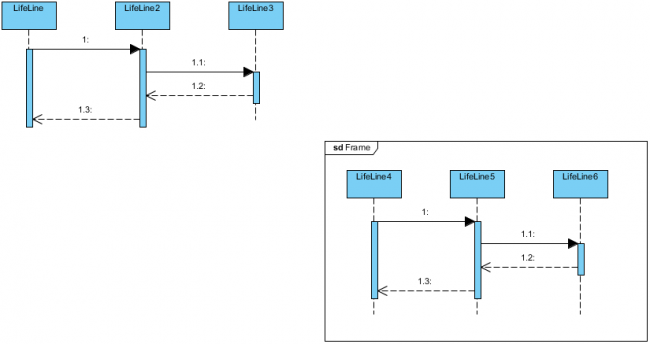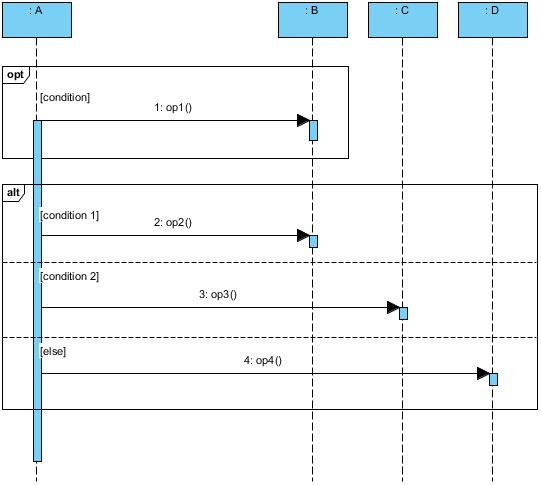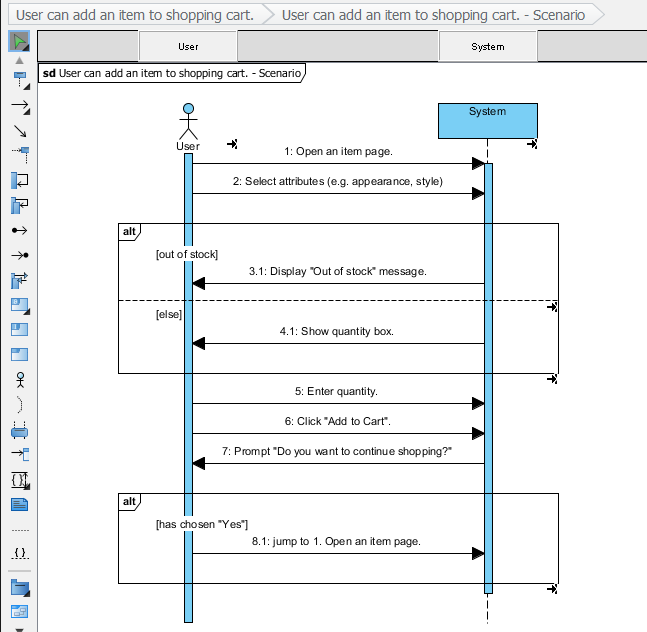

- #VISUAL PARADIGM SEQUENCE DIAGRAM OPT HOW TO#
- #VISUAL PARADIGM SEQUENCE DIAGRAM OPT FULL#
- #VISUAL PARADIGM SEQUENCE DIAGRAM OPT PROFESSIONAL#
- #VISUAL PARADIGM SEQUENCE DIAGRAM OPT FREE#
In case you don’t know the Major Method, here’s a simplified primer: Next, since you’re a clever fan of the Magnetic Memory Method, you already know the Major Method. If you play any stringed instrument, be it a 4-stringed violin or a 21-string sitar, I recommend you name each string. Probably less, but I didn’t have a timer running. Next, let’s try and make each string more concrete.įor example, I play primarily 5-string bass, so my strings all have an associated character:ī = Bob (Played by Bill Murray in What About Bob?)Ĭoming up with these figures took approximately 2 minutes. If we say that each open note is represented by 0, as it is in guitar tablature, then we can agree that each note has a numerically expressible geographical coordinates. There are several more appearances, including the open string noted and 12th fret positions on the E strings themselves. In this way, the fretboard shares characteristics with the chess board (something I believe this approach will also help with when it comes to memorizing chess moves).įor example, E appears several times in the fretboard. The fretboard of the guitar is a field that can be expressed using coordinates. For some much earlier writing I put out on the topic, you might want to start with Memorize Bach On Bass. There are a lot of aspects to music and what I’ve got for you is just a piece of the puzzle. I’ll make a few suggestions about chords, but beyond that, I cannot currently say much.
#VISUAL PARADIGM SEQUENCE DIAGRAM OPT HOW TO#
To accomplish this, we need to know how to use instruments like guitars and pianos in terms of what note falls on which spatial position. This material is a demonstration of what is possible if you combine a number of Magnetic Memory Method elements and see your instrument as its own kind of Memory Palace. What I’m going to cover in this post is the memorization of the notes on the fretboard of stringed instruments like the guitar and the keys of a piano.

Here’s how a thorough reading and re-reading of this material will help: You’re here to learn skills that will serve you for life and that means learning to make music mnemonics of your own. Not goof around with yet another crutch of limited, short-term value. You can find lots more mnemonics for music like these all over the net, but in truth …īecause you’re on the Magnetic Memory Method website to master music mnemonics and other memory techniques. I don’t have much to add when it comes to Every Good Boy Deserves Fudge for the treble stave and FACE for the notes between the lines. If you want to memorize notes on the staff, there are already well-established mnemonics for that. Since numbers might be involved, go in prepared with the Major Method.
#VISUAL PARADIGM SEQUENCE DIAGRAM OPT PROFESSIONAL#
Just treat the terms like you would any professional material, like you would using the second edition of How to Learn and Memorize Legal Terminology. If we’re talking about musical terminology, that’s easy. To just throw around the term “music mnemonics” risks confusing everyone. Or, we need to focus on particular parts of music theory. When talking about memorizing music, we need to be specific about what kind of music and for what instrument. It will be impossible for you not to grow in memory and mind if you choose to tinker with them.Īnd who knows? You might come up with a cool variation that winds up in the forthcoming book and video course!įirst off, we need to establish some ground rules and guiding principles for music mnemonics. They’re also so logical, coherent and mnemonically beautiful. In the meantime, the concepts are far too exciting not to share. I will keep exploring every nook and cranny of using mnemonics to remember music.Īnd when I’m satisfied, I’ll make a course about how you can use the method too. Here’s a run down of where things currently stand with how to memorize notes on a guitar: UPDATE: Since originally writing this post, I have made great strides.

That means I haven’t used the approach I’ll describe for you to its fullest potential.
#VISUAL PARADIGM SEQUENCE DIAGRAM OPT FULL#
I’ve completed some promising experiments, but haven’t completed the full Memory Palace for any single instrument. What I’m about to share is largely untested.

#VISUAL PARADIGM SEQUENCE DIAGRAM OPT FREE#
> Click Here For This Special Free Offer. Here’s the thing: Yours Free: A Private Course With Cheat Sheets For Becoming A Memory Master, Starting From Scratch. Wouldn’t it be awesome if you could look at a piece of music once, instantly memorize the notes and then immediately start drilling it into muscle memory? The time you’d save using music mnemonics would be immense, and you’d experience much more pleasure learning music as a result. Subscribe: Apple Podcasts | Google Podcasts | Stitcher | RSS


 0 kommentar(er)
0 kommentar(er)
